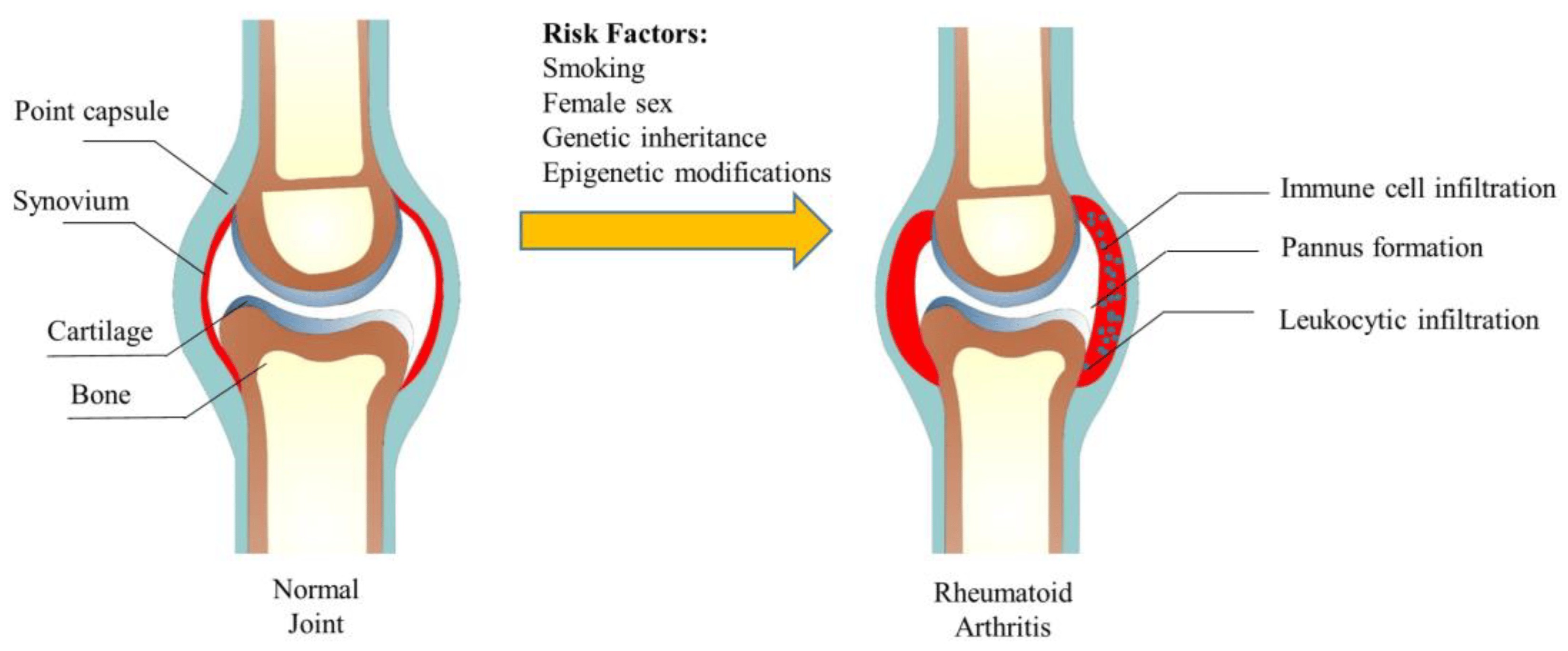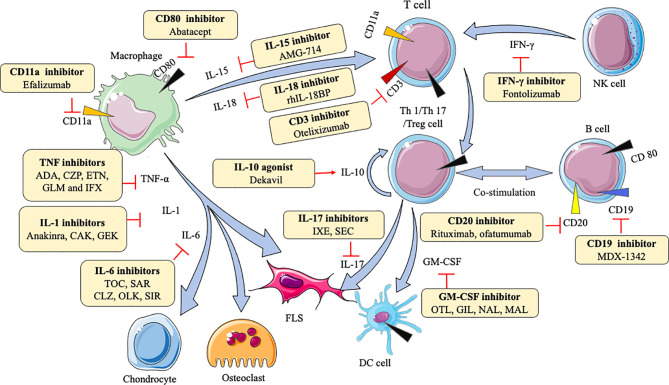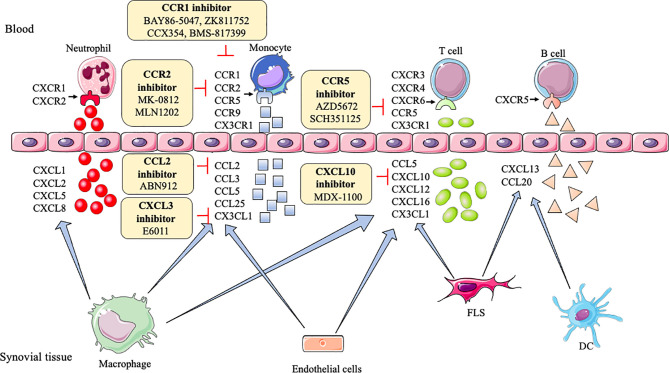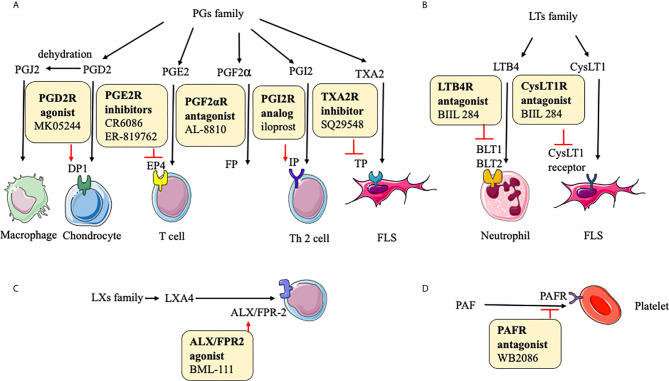Rheumatoid arthritis Therapeutic Targets
Available Resources for Study of Rheumatoid Arthritis Therapeutic Targets
At Creative BioMart, we strive to be leaders in the field of rheumatoid arthritis research. Our primary focus is to equip researchers with the latest tools and information necessary to advance this critical area of study.
- We provide an extensive range of products, including recombinant proteins and other essential materials that are vital in unraveling the mechanisms underlying rheumatoid arthritis. We recognize that each researcher has unique requirements, which is why we offer a diverse selection of products tailored to their specific needs.
- Our team of experienced experts who specialize in rheumatoid arthritis research possess a wealth of knowledge and are fully committed to providing personalized and customized solutions to fulfill the specific requirements of each researcher.
- Furthermore, we offer comprehensive support resources that encompass detailed information on involved pathways, protein functions, interacting proteins, and other valuable insights. Our ultimate aim is to empower researchers to develop a comprehensive understanding of rheumatoid arthritis and enhance the impact of their research endeavors.
Our Featured Products
- Recombinant Human ITGA4 & ITGB7 Protein, His-Avi-tagged, Biotinylated
- Active Recombinant Human CD80, His-tagged, Biotinylated
- Recombinant Cynomolgus CD80 Protein, His-tagged
- Recombinant Human CD86 Protein, Fc-tagged
- Recombinant Mouse Cd86, Fc-His tagged
- Recombinant Human FCGR3B protein, His-tagged
- Recombinant Mouse Il6ra, His tagged
- Active Recombinant Human IL13
- Active Recombinant Human VEGFA
- Active Recombinant Human IL1R1, His tagged
- Recombinant Human SYK, His-tagged
- Recombinant Human TNFA, His-tagged
- Recombinant Human IL12A protein, Fc-tagged
- Recombinant Human MAPK14 protein(Met1-Ser360), His-tagged
- Active Recombinant Human MIF
- Recombinant Human IL1R2 protein, Fc-tagged
- Recombinant Human MAPK10 protein, His-tagged
- Recombinant Human MAPK13 protein, GST-tagged
- Recombinant Human MAPK8, GST-tagged
- Active Recombinant Human C5 protein
- Recombinant Human CD4, Fc-His tagged
- Recombinant Mouse Fcgr4, His tagged
- Active Recombinant Human FGF2 Protein, Biotinylated
- Recombinant Human IL12B protein, Fc-tagged
- Recombinant Human IL15 protein
- Recombinant Human IL1RAP protein, His-tagged
- Recombinant Human IL1RAPL1, Fc tagged
- Recombinant Human IL1RAPL2, Fc tagged
- Recombinant Human IL1RA protein, GST-tagged
- Recombinant Mouse Itgb1 protein, His-tagged
- Recombinant Human JNK2 protein, GST-tagged
- Recombinant Human MMP1 protein, His-tagged
- Recombinant Human MMP12 protein, His-tagged
- Active Recombinant Human MMP2 protein(Met 1-Cys 660)
- Recombinant Human MMP7, Fc tagged
- Active Recombinant Human MMP8, His tagged
- Active Recombinant Mouse MMP9 protein, His-tagged
- Recombinant Human NFKB1 protein, His-tagged
- Recombinant Human OSM, His-tagged
- Recombinant Human TNFRSF1A, Fc-His tagged
- Active Recombinant Human VEGFA
- Recombinant Goat VEGFA Protein
Whether you are studying rheumatoid arthritis pathology, drug discovery, or treatment development, Creative BioMart is here to support your research. We are committed to helping you achieve your scientific goals and make meaningful contributions to the field of rheumatoid arthritis research. Contact us today to learn more about our products and resources.
About Rheumatoid Arthritis
Rheumatoid arthritis (RA) is classified as a systemic poly-articular chronic autoimmune joint disease that primarily affects hands and feet. RA is pathologically manifested as immune cell infiltration, hyperplasia of the synovial lining, pannus formation, and destruction of articular cartilage and bone. Although the exact etiology of RA is unclear, it is certain that genetic and environmental factors have influences on RA occurrence. RA patients typically experience morning stiffness. If left untreated, they could appear as small focal necrosis, adhesion of granulation, and fibrous tissue on the articular surface, which lead to progressive joint ankylosis, destruction, deformities, and disability.
To date, a large number of clinical trials have been performed by scientists and clinicians for testing different types of agents in RA treatment. Some of these agents have been approved for daily clinical practice. In the first place, nonsteroidal anti-inflammatory drugs (NSAIDs), including acetylsalicylate, naproxen, ibuprofen, and etodolac, are used to alleviate pain, swelling, and decrease inflammation. In addition, corticosteroids, like glucocorticoids, are another kind of potent anti-inflammatory drug, which modulates gene expression by binding to glucocorticoid receptors to display anti-inflammatory and immunosuppressive effects.
With the deepening of research and exploration, many molecules are identified to exert important roles and bring novel insights to prevent RA. For example, emerging protein targets like IL-4, IL-10, IL-15, IL-17, IL-18, IL-23, and interleukin-1 receptor-associated kinase (IRAK)-4 have been revealed to have a strong implication with innate and adaptive immune response in RA. Small molecular metabolites, including prostaglandins (PGs), lipoxins (LXs), platelet-activating factor (PAF) and leukotrienes (LTs), nitric oxide (NO), and reactive oxygen species (ROS), are also vital participants and mediators in the physiopathology of RA. Besides, an increasing number of studies show that epigenetic regulators play important roles in RA, like non-coding RNAs, DNA methylation, RNA methylation, and histone modifications. Up to now, researchers have explored and developed some new agents for RA according to these classical or emerging targets.
 Fig.1 The structure of the joint and its change in rheumatoid arthritis. (Zhu M, et al., 2023)
Fig.1 The structure of the joint and its change in rheumatoid arthritis. (Zhu M, et al., 2023)
The Therapeutic Targets of Rheumatoid Arthritis
Cytokine Targets
Cytokines play a significant role in the development and progression of rheumatoid arthritis (RA).
- Pro-inflammatory cytokines, such as TNF-α, IL-1β, IL-6, IL-7, IL-15, IL-17, IL-18, IL-23, IFN-γ, and GM-CSF, are elevated in RA patients and contribute to inflammation. These cytokines can induce the production of inflammatory mediators and stimulate the proliferation of synovial cells, leading to joint damage.
- Additionally, some cytokines, such as IL-7, IL-15, IL-17, IL-23, and GM-CSF, are associated with diagnostic biomarkers for RA and disease activity.
- Macrophages play a crucial role in cytokine production, with TNF-α, IL-1β, IL-6, IL-7, IL-15, IL-18, and IL-23 being secreted by activated macrophages. These cytokines further contribute to inflammation, bone resorption, and cartilage degeneration in RA.
Inhibition of specific cytokines has been a successful approach for RA treatment, with various agents targeting TNF, IL-6, IL-1, IL-15, and IL-17 being developed and applied in clinical practice. These agents help reduce inflammation and alleviate symptoms and pain in RA patients.
 Fig.2 Action of drugs targeting cytokines in rheumatoid arthritis. (Huang J, et al., 2021)
Fig.2 Action of drugs targeting cytokines in rheumatoid arthritis. (Huang J, et al., 2021)
Chemokine Targets
Chemokines play a crucial role in the underlying pathogenesis of rheumatoid arthritis (RA). They recruit leukocytes and affect angiogenesis. There are four categories of chemokines: CXC, CC, XC, and CX3C.
- CXC chemokines, such as CXCL1, CXCL2, CXCL5, CXCL6, CXCL8, CXCL9, CXCL10, CXCL12, CXCL13, and CXCL16, are found to have abnormal expression levels in synovial fluids, synovial tissues, fibroblasts, and endothelial cells of RA patients. CXC chemokines are involved in neutrophil chemotaxis, recruitment of effector T cells and B cells into the joint, endothelial progenitor cell recruitment, Th1 cells and lymphocytes recruitment, and inhibition of neutrophil recruitment.
- CC chemokines, including CCL2, CCL3, CCL4, CCL5, CCL7, CCL13, CCL14, CCL16, CCL18, CCL19, CCL20, CCL21, and CCL25, are abnormally expressed in plasma and synovia in RA. CC chemokines are involved in the recruitment of monocytes, T cells, B cells, endothelial cells, myeloid leukemia mononuclear cells, skin-specific memory T cells, and dendritic cells into the joint.
- XC and CX3C chemokines, like XCL1, XCR1, CX3CL1, and CX3CR1, have an up-regulation in mononuclear cells and synovial fibroblasts in RA patients. They are involved in the recruitment of T cells, synovial fibroblasts, monocytes, and subchondral mesenchymal progenitor cells into the RA synovium.
Inhibitors or antagonists of these chemokines and their receptors have shown promising results in animal studies and some have entered clinical trials. These findings suggest that targeting chemokines and their receptors may be a potential therapeutic strategy for RA.
 Fig.3 Action of drugs targeting chemokines in rheumatoid arthritis. (Huang J, et al., 2021)
Fig.3 Action of drugs targeting chemokines in rheumatoid arthritis. (Huang J, et al., 2021)
Other Proteins Targets
There are various other proteins involved in the pathogenesis of rheumatoid arthritis (RA) and targeting these proteins can be a potential treatment option. Agents targeting important proteins such as JAK, IRAK-4, p38 MAPK, ERK, JNK, MMPs, toll-like receptor (TLR)-4, G protein-coupled receptor kinase (GRK)-2, Bruton's tyrosine kinase (BTK), CD3, CD11a, CD19, CD20, and CD80 have been explored and tested to treat RA. These proteins play a significant role in the inflammatory cellular pathways involved in RA. Clinical trials have been conducted to test the effectiveness of inhibitors targeting these proteins in treating RA.
Small Molecular Metabolite Targets
Previous research has shown that small molecular metabolites, like prostaglandins (PGs), leukotrienes (LTs), lipoxins (LXs), platelet-activating factor (PAF), reactive oxygen species (ROS), and nitric oxide (NO), support to induce, maintain, or relieve inflammation in RA. Therefore, such compounds could be potential therapeutic targets.
 Fig.4 Action of drugs targeting small molecular metabolites in rheumatoid arthritis. (Huang J, et al., 2021)
Fig.4 Action of drugs targeting small molecular metabolites in rheumatoid arthritis. (Huang J, et al., 2021)
Epigenetic Targets
Epigenetic modifications are a crucial process that can regulate gene expression without changing the actual DNA sequence. This regulatory mechanism involves various mechanisms, including non-coding RNAs (ncRNAs) regulation, DNA methylation, RNA methylation, and histone modifications. Numerous research has established that several abnormalities in these mechanisms eventuate in the development of RA. Corresponding target agents have been applied for patients.
References:
- Zhu M, Ding Q, Lin Z, Fu R, Zhang F, Li Z, Zhang M, Zhu Y. New Targets and Strategies for Rheumatoid Arthritis: From Signal Transduction to Epigenetic Aspect. Biomolecules. 2023; 13(5):766. https://doi.org/10.3390/biom1305076
- Huang J, Fu X, Chen X, Li Z, Huang Y, Liang C. Promising Therapeutic Targets for Treatment of Rheumatoid Arthritis. Front Immunol. 2021;12:686155. Published 2021 Jul 9. doi:10.3389/fimmu.2021.686155


